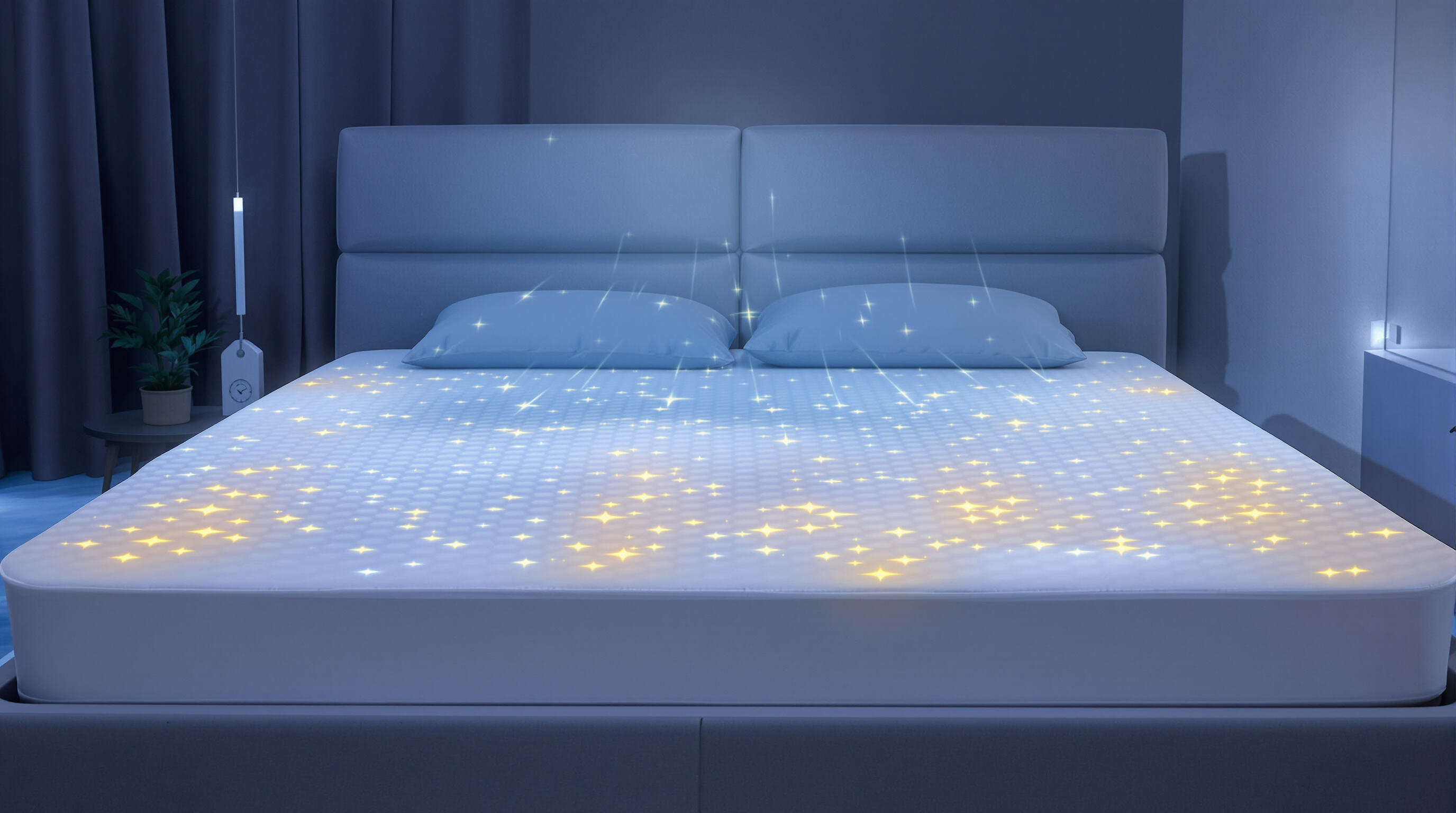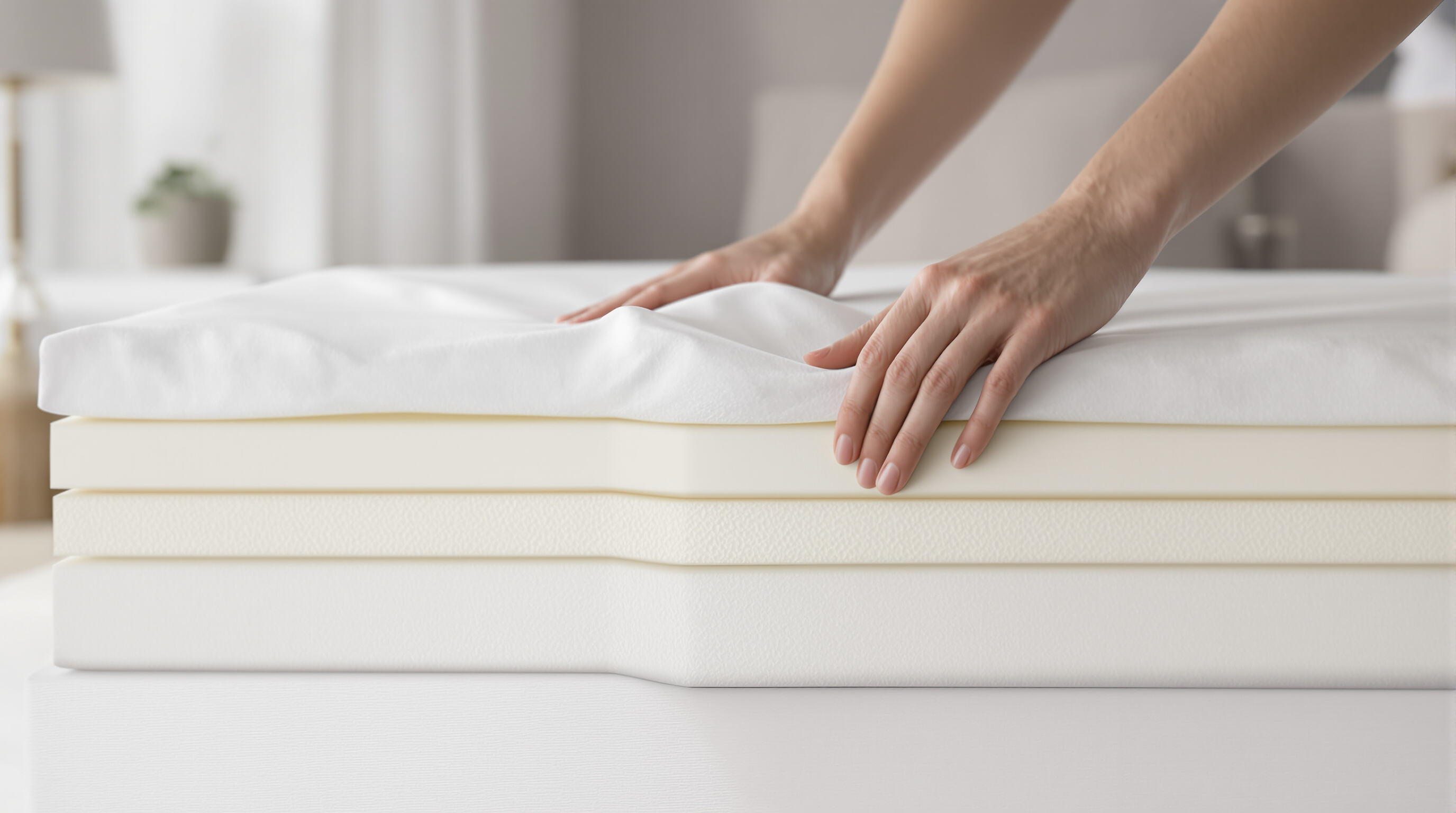Mattress pads basically make beds more comfortable by adding another layer of cushioning that people can choose based on what they like best. The memory foam ones really mold around the body shape, which helps take pressure off sore spots about 34 percent better than just sleeping directly on the mattress according to Sleep Science Journal from last year. Cotton filled pads let air circulate better too, so folks who get hot at night might find them helpful for staying cool through the night. These pads are actually pretty smart since buying a whole new mattress costs way more money. They allow someone to tweak how soft or firm their bed feels without messing with the main support system already built into their current mattress setup.
A 2023 clinical trial found that participants using medium-firm mattress pads experienced 28% longer deep sleep phases than those on standard mattresses. This improvement was linked to better spinal alignment and fewer micro-awakenings caused by pressure discomfort—key factors in achieving restorative, high-quality sleep.
In a 6-month observational study, 73% of participants fell asleep 15% faster after adding a 2” memory foam pad. Wearable sleep trackers recorded a 22% increase in sleep efficiency and a 41% reduction in nighttime awakenings, with the most significant benefits seen among side sleepers.
High-quality mattress pads retain 89% of their pressure-relief performance after two years of nightly use, according to manufacturer durability tests. This sustained support slows the comfort decline typically seen in aging mattresses, extending the lifespan of the entire sleep system by 3–5 years through protective layering.
Today's waterproof pads are made from better stuff these days, think polyurethane coated Tencel or those cotton jersey mixes that make for a soft, bendy barrier against spills but don't keep you hot and sweaty. Some newer models actually have this CLIMA fiber layer that keeps things cooler at night. Studies from Sleep Foundation show they cut down on overheating problems by about 34% when compared to old school vinyl pads. No more that annoying plastic sheet feeling either, plus they still give proper hospital level protection against accidents and messes.
Three key innovations address common drawbacks:
Independent testing of six top brands showed 87% maintained waterproof integrity after 200+ residential washes (Wirecutter 2023). The best-performing models featured double-stitched gussets and laser-cut vent channels to resist edge wear. Pads with 5-zone elastic skirts and non-slip silicone grips shifted 92% less than basic designs over the study period.

Mattress pads designed for cooling can keep sleep temperatures more consistent throughout the night by pulling away body heat and moving sweat away from the skin. Research published in Sleep Health Journal back in 2023 found that people who tend to get hot during sleep experienced about 63% better continuity in their rest when using these products. The newer models with special phase change materials and those filled with air pockets in the foam seem particularly effective. A study from Textiles Lab last year showed these advanced options cut down on waking up at night by around 41% compared with regular bedding materials. For anyone struggling with temperature regulation while sleeping, this kind of technology represents a real breakthrough.
Modern cooling pads combine performance and comfort:
About 58 percent of people who say they get too hot at night find cooling pads help them sleep better according to Consumer Reports from last year. But results aren't consistent across the board. Researchers ran a six month test and noticed something interesting water resistant cooling pads cut down on those annoying heat interruptions around 19% of the time, whereas regular ones only managed about 34%. That seems to point toward how dense the materials are making a difference in how well air can circulate through them. And despite all this talk about stats, most folks dealing with night sweats still think these temperature controlled pads are basically necessary items for anyone trying to get good rest. They just want what works best for their specific situation after all.
Cotton pads with quilting feel nice because they let air through and adjust to body temperature, but they tend to flatten quicker compared to synthetic options. Memory foam is great at shaping around the spine for specific pressure points, although it gets pretty warm during the night so better airflow would be helpful. Latex offers good bounce back and lasts longer than regular foam. Down alternatives try to copy the softness of real feathers using allergy friendly synthetics, but some people find them bunching up after several washes which can be frustrating over time.
People with sensitive skin often find hypoallergenic latex and tightly woven cotton sheets work best at keeping allergens out of their beds. When it comes to staying cool through the night, materials matter a lot. Open cell foam and natural fibers let air circulate properly, which helps maintain comfortable temperatures during sleep. Testing has revealed something interesting too dense latex actually holds up against compression about 30 percent better than top quality memory foam options. And newer waterproof mattress protectors now feature these quiet moisture barriers made with special knitting techniques that stop those annoying crinkle sounds when moving around in bed.
When it comes to spreading out pressure points, foam really stands out. Viscoelastic materials soak up around 95% more pressure spikes than regular fiber fillings do. People who sleep on memory foam beds often notice their hips and shoulders feel less compressed after switching from old fashioned batting materials. The difference can be as much as 34% reduction in pressure buildup. For those looking at fiber filled options, quilted pads offer decent support thanks to layers of cotton or polyester fabric that let air circulate pretty well throughout the night. Some newer mattress designs mix things up by combining latex cores that have different zones of firmness with soft fiber tops. These hybrids seem to strike a good balance between comfort and proper body alignment for most sleepers.
Getting the right balance between plush comfort and lasting durability remains a real headache for manufacturers. Down alternatives definitely win when it comes to how comfortable they feel right out of the box, but most start showing signs of wear after about 18 to maybe 24 months. Natural latex on the other hand tends to hold up much longer, often staying good for over five years, though many people find them a bit firm when first used. What works best are those high quality waterproof pads that tackle both issues at once. These typically feature multiple layers built into their design, with reinforced edges that help keep that deep seating feel intact while still doing their job protecting against spills and damage. Most experienced buyers know these multi layer constructions offer the sweet spot between immediate comfort and long term value.

Mattress pads are ideal when your bed feels too firm—causing hip pressure for side sleepers—or too soft, leading to spinal misalignment for back sleepers. A 2024 mattress comfort study by CNET found medium-firm pads improve spinal alignment by 34% compared to bare mattresses. They’re most effective when:
Over 80% of users in sleep surveys report that mattress pads extend their mattress lifespan by 2–3 years while preserving preferred firmness. One couple achieved a 28% increase in deep sleep by layering a plush microfiber pad for shoulder relief with a medium-latex layer for lumbar support.
Latex’s rapid rebound (85% faster than memory foam) counteracts the “quicksand” effect in soft mattresses when paired with plush pads. This dual-layer system reduces pressure points by 41% while maintaining airflow, as confirmed in controlled humidity testing.
Mattress pads improve comfort by adding a layer of cushioning and can adjust the firmness of your bed. They help reduce pressure points and extend the lifespan of a mattress.
Modern waterproof pads use materials like Tencel and cotton jersey blends that provide spill protection while maintaining softness and breathability.
Cooling mattress pads often utilize breathable materials like Tencel lyocell and gel-infused foams that help dissipate heat and maintain a consistent sleep temperature.
Yes, studies have shown that mattress pads can improve sleep efficiency, extend deep sleep phases, and reduce nighttime awakenings by optimizing the sleep surface.
 Hot News
Hot News2025-09-04
2025-09-02
2025-09-01
2025-07-08
2025-06-10
2025-11-27